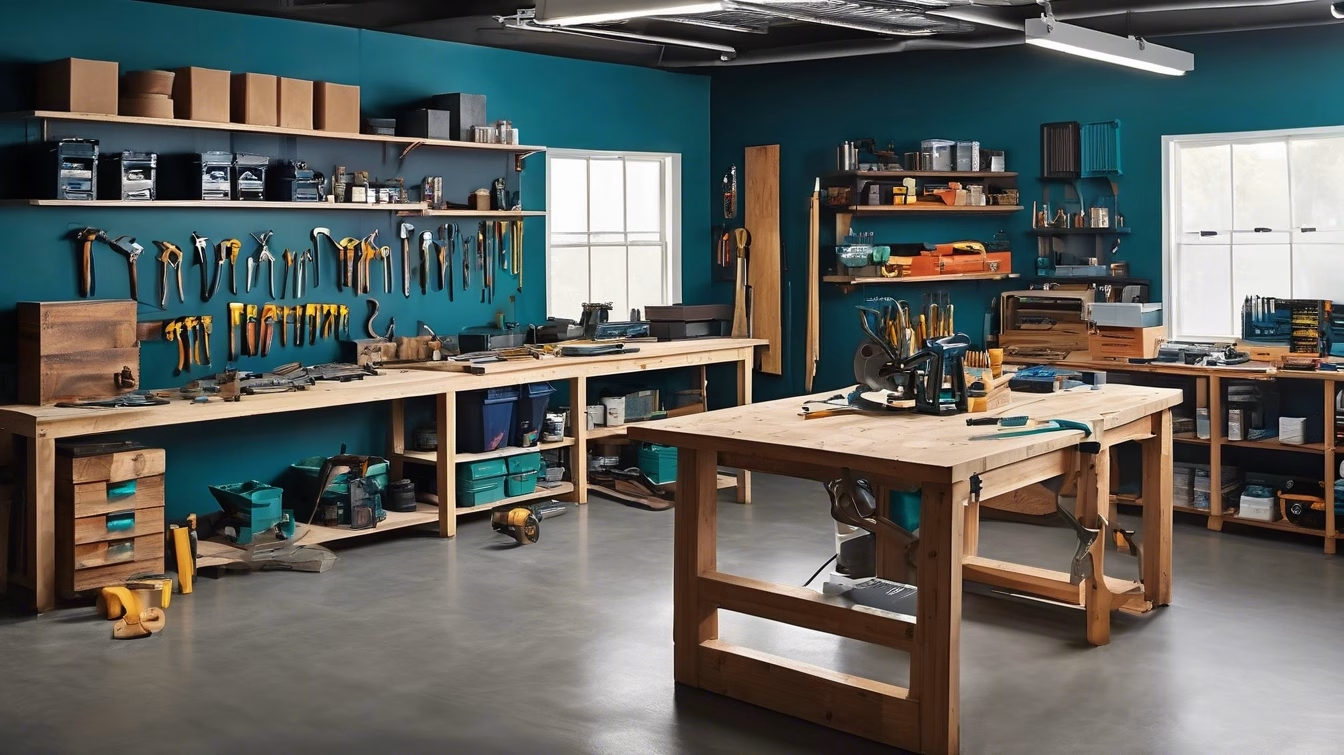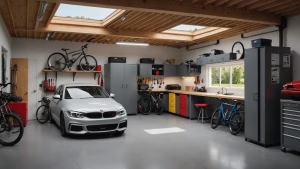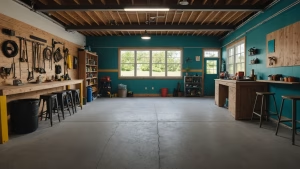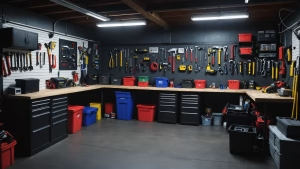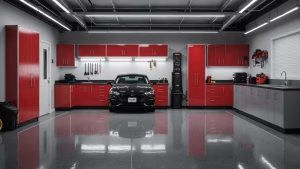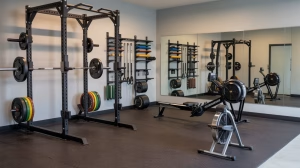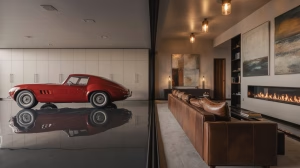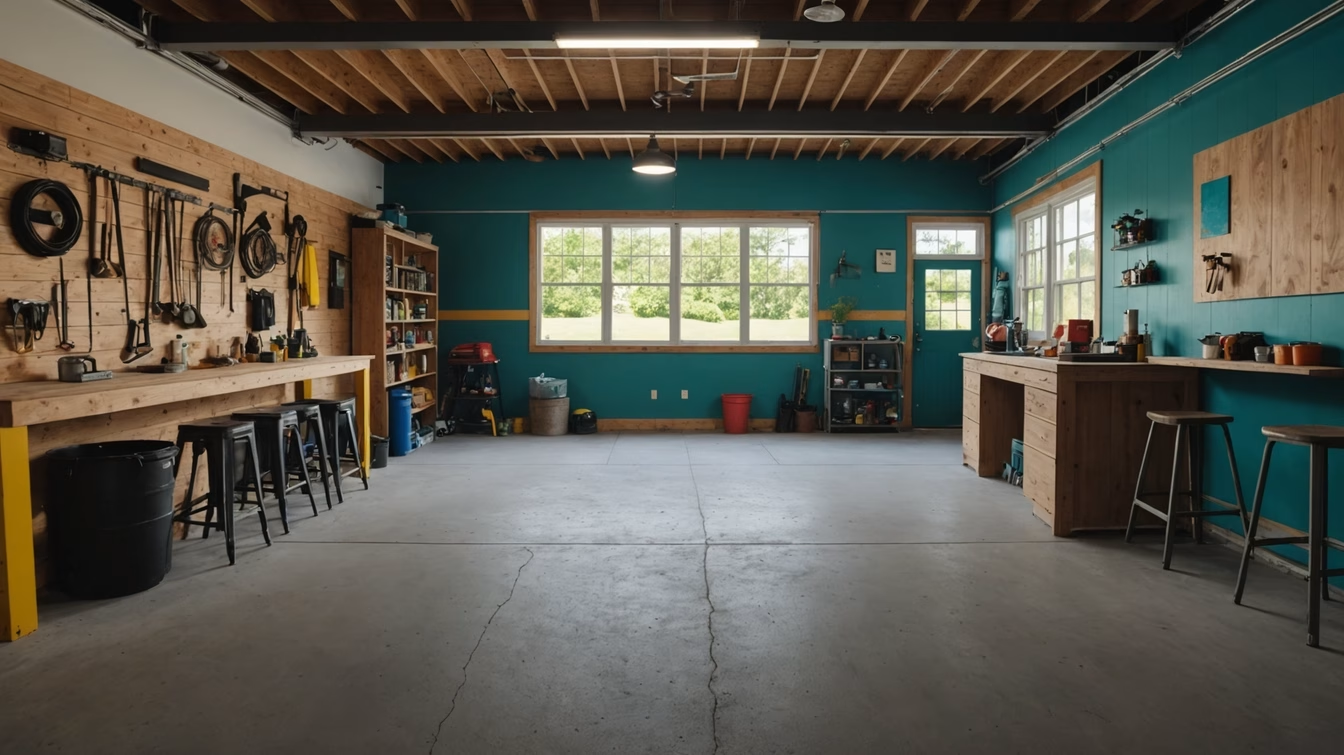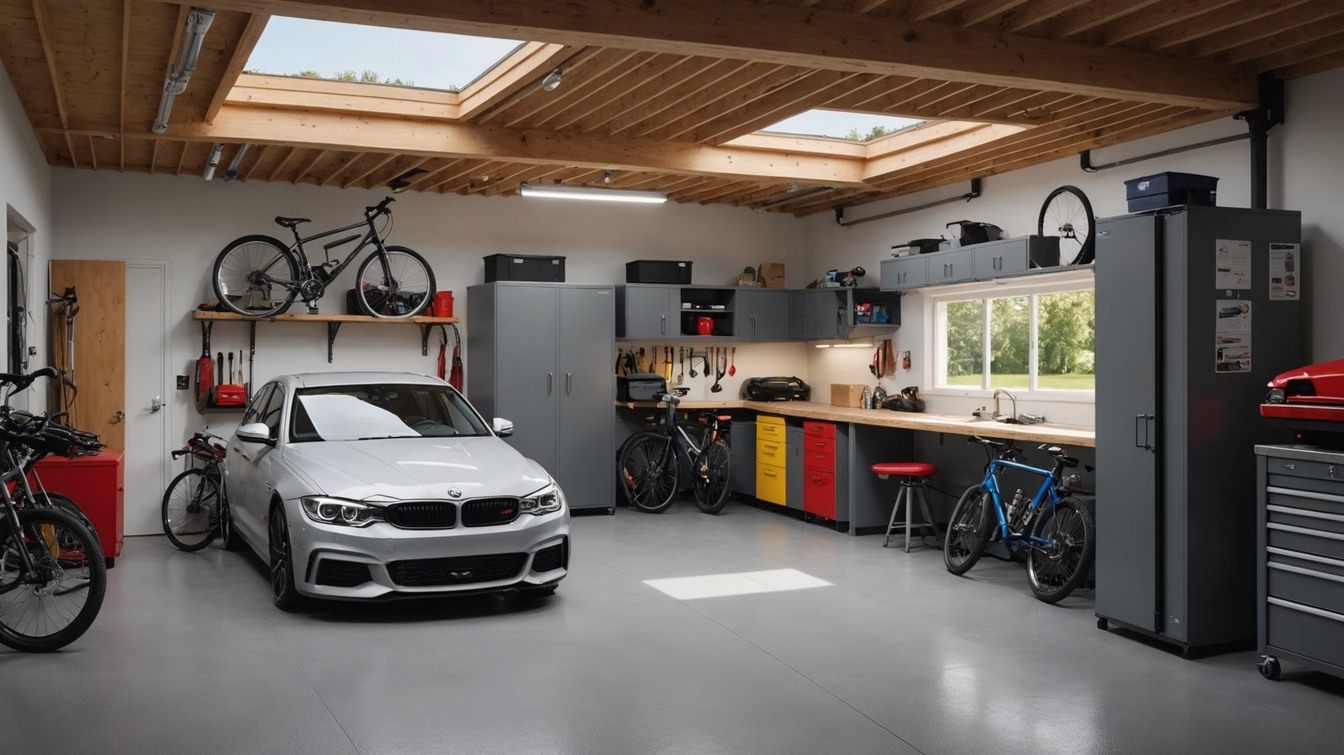Introduction: More Than Just a Color
Your garage wood shop is more than just a place to store tools and cut wood; it’s a sanctuary for creativity, a space for precision, and a hub of productivity. The paint on your walls plays a crucial role in shaping this environment. The right color can improve visibility, reduce eye strain, and even influence your mood and focus. Choosing a paint color isn’t just about aesthetics; it’s a strategic decision that can directly impact the quality of your work and the enjoyment you get from your hobby.
A well-painted wood shop can make the space feel larger, brighter, and more inviting. It can also help you stay organized by creating a clean backdrop against which tools and materials are easy to spot. From practical considerations like hiding dust and grime to psychological factors that affect your concentration, this guide will explore 10 creative and functional paint color ideas to help you transform your garage wood shop into a space you’ll love to work in.
1. Bright White: The Classic for a Reason
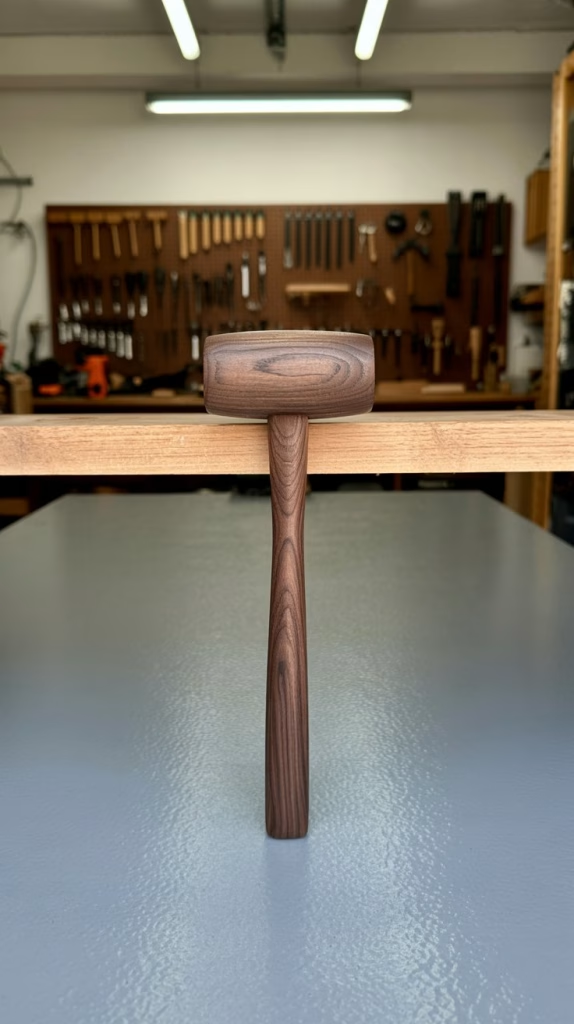
Bright white is a timeless choice for any workspace, especially a wood shop. Its primary advantage is its ability to maximize light. Woodworking requires excellent visibility for precise cuts and detailed finishing. White walls reflect both natural and artificial light, making the entire space feel brighter and reducing the need for excessive lighting. This is particularly beneficial for older garages that may have limited windows or poor existing lighting.
Beyond its lighting benefits, a white backdrop creates a sense of cleanliness and order. It’s a blank canvas that makes it easy to spot tools, measure lumber, and see details on your projects. While it may show dirt and sawdust more easily, this can be a good thing. It forces you to keep your workspace tidy, which is a key safety measure and a hallmark of a professional-grade shop. A fresh coat of white paint can make an old, dingy garage feel brand new and ready for serious work.
2. Light Gray: The Sophisticated and Practical Choice
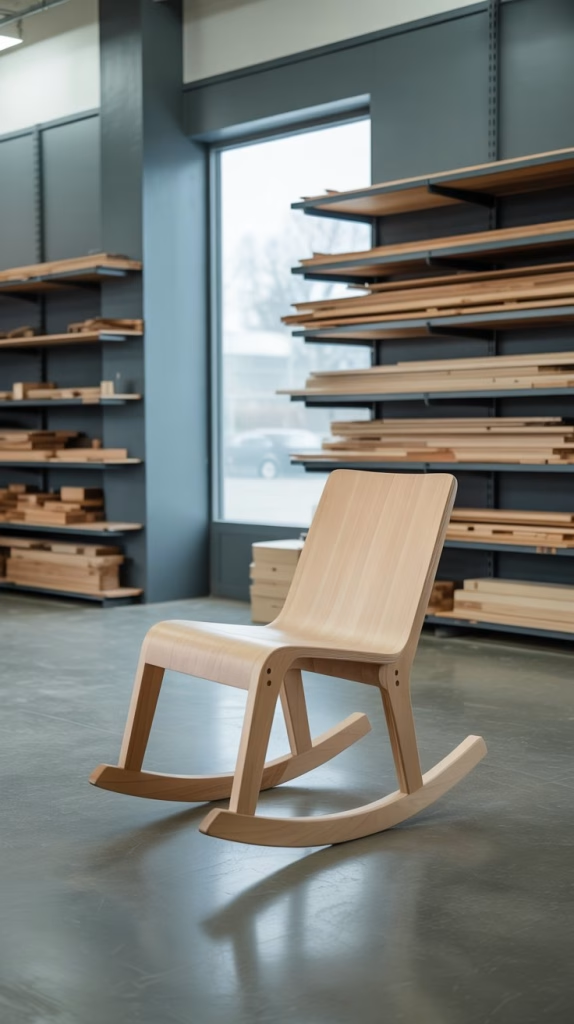
Light gray is an excellent alternative to white, offering many of the same benefits with a bit more practicality. It still reflects a good amount of light, but it’s much more forgiving when it comes to sawdust and minor scuffs. A light gray wall won’t show every speck of dust, which can be a welcome relief for those who prefer to focus on their work rather than constant cleaning. This color also projects a sense of sophistication and modernity.
A light gray can also serve as an excellent neutral backdrop, allowing you to use pops of color for organizational purposes. For example, you could use a vibrant red or blue on tool chests, shelves, or even a feature wall. This contrast can create a visually appealing and highly functional space. The subtle tone of light gray helps to reduce glare, which can be a common issue with bright white walls under certain lighting conditions. It’s a calming color that won’t distract you from the task at hand.
3. Deep Blue: The Color of Focus and Calm

For those who find bright colors distracting, a deep blue can be an ideal choice. Shades like navy, royal, or even a dark slate blue are known to have a calming effect and can help improve concentration. This is particularly useful for woodworking tasks that require a high degree of precision and focus, such as joinery or carving. The deep color helps to create a cozy, intimate atmosphere, making the space feel like a dedicated haven for your craft.
While dark colors might seem counterintuitive for a workspace, they can be highly effective when paired with a thoughtful lighting plan. By using a combination of bright overhead lights and focused task lighting, you can create a dramatic and highly functional environment. The dark walls absorb excess light, which can reduce eye strain from glare. This allows you to focus on the specific area you are working on, with the surrounding dark walls fading into the background. A deep blue also pairs beautifully with the warm, natural tones of wood, making your projects stand out in a visually pleasing way.
4. Vibrant Teal or Turquoise: The Creative and Energetic Space
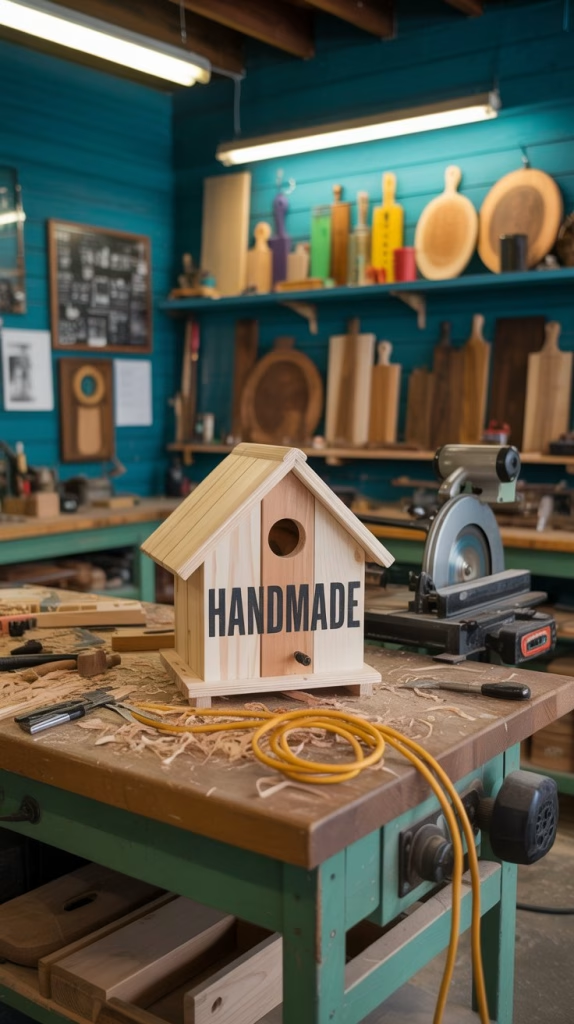
If you’re looking for a color that inspires creativity and energy, look no further than teal or turquoise. These colors are a blend of the calming properties of blue and the invigorating qualities of green. They can help to boost mood and creativity, making your time in the shop more enjoyable and productive. A vibrant teal can make the space feel fresh, modern, and unique, setting it apart from a typical, bland garage.
Using a bright color like teal can also be a great way to make your shop feel less like a utilitarian space and more like a personal studio. It’s a statement color that reflects a passionate and creative personality. To prevent the color from being overwhelming, you can use it on a single accent wall or incorporate it into your shop’s organization system. For example, paint the walls a neutral gray and use teal on your tool cabinets or storage bins. This allows you to enjoy the psychological benefits of the color without it dominating the entire space.
5. Sage Green: The Natural and Earthy Palette
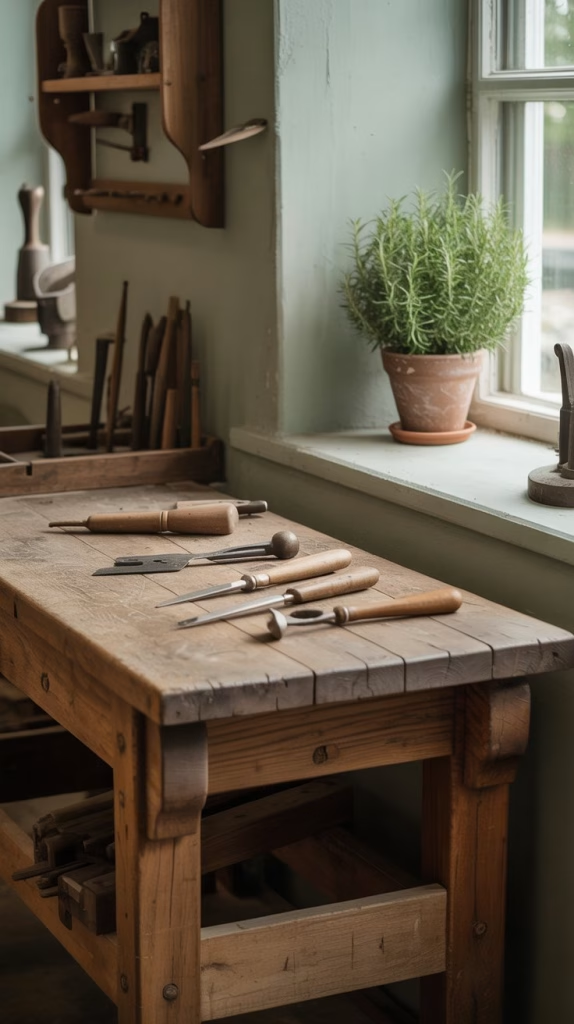
Sage green is a wonderful choice for a wood shop because it evokes a sense of nature and tranquility. As a color, green is known to be restful on the eyes and can help reduce feelings of stress and anxiety. For a woodworker, who spends their time creating with a natural material, a color that connects the space to the outdoors feels particularly fitting. It’s a sophisticated and understated color that creates a peaceful and focused environment.
This earthy tone also pairs exceptionally well with the various colors of different types of wood, from the light tones of maple to the rich hues of walnut. The green walls serve as a beautiful and subtle backdrop that allows the grain and natural beauty of your projects to be the main focus. Sage green is also a color that is not easily dated, so it will look good for years to come. It’s a classic choice that promotes a sense of harmony and balance in the workspace.
6. Charcoal or Dark Gray: The Industrial and Modern Look
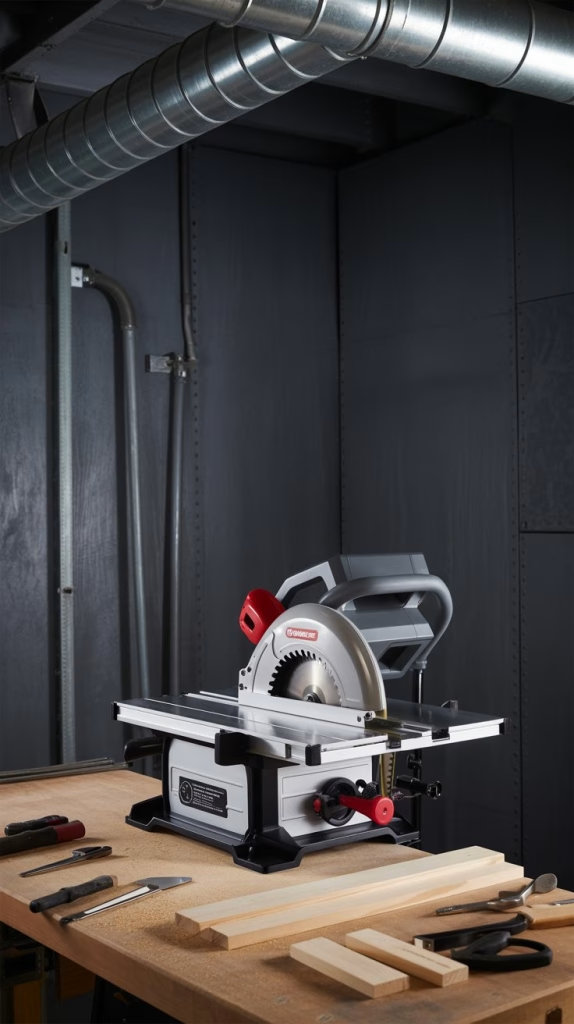
For a bold, modern, and industrial feel, consider a dark gray or charcoal paint color. This is a very practical choice for a wood shop, as it effectively hides dirt, sawdust, and scuffs. The dark color creates a dramatic backdrop that makes tools and equipment stand out, making them easier to find. This can be a huge benefit for a shop with a lot of tools or a busy workflow.
A dark color scheme requires careful attention to lighting, but when done correctly, the results are stunning. High-intensity lighting, focused on key workstations, will create a professional, high-end feel. The dark walls absorb light, which can minimize glare and help to create a more focused environment. The stark contrast between the dark walls and the natural colors of wood can be very appealing, making your projects look even more beautiful. A dark gray shop feels powerful, serious, and ready for any project.
7. Sunny Yellow: The Bright and Energetic Option
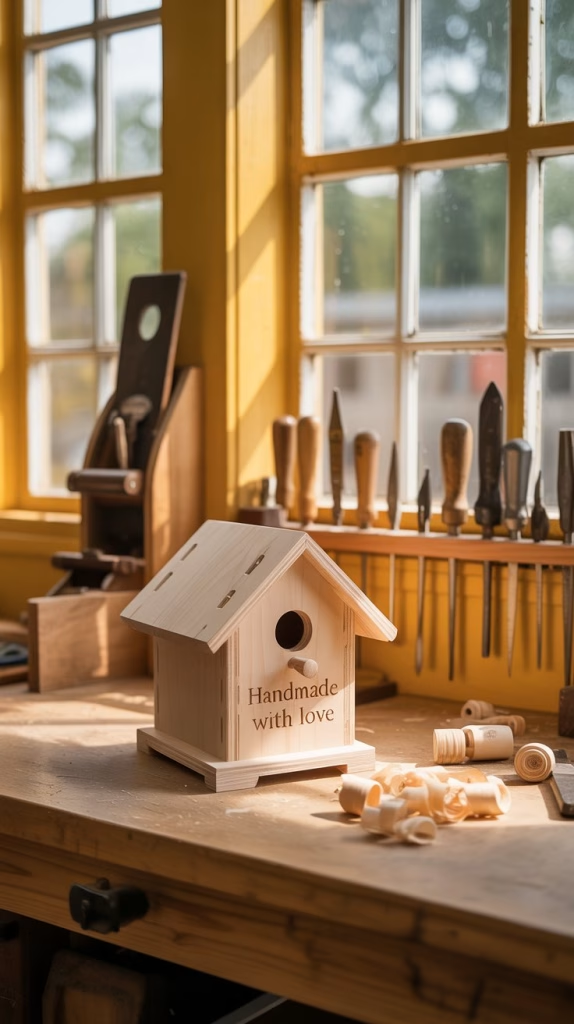
Yellow is a color that is almost universally associated with happiness, energy, and optimism. Painting your wood shop a sunny yellow can make the space feel incredibly warm and inviting, even on a cold, dreary day. This can be a huge mood booster and can help to keep your energy levels up during long projects. It’s a great choice for a woodworker who wants their shop to feel like a positive and inspiring place to be.
While a bright, primary yellow might be too intense, a softer, more muted shade can be highly effective. A pale, creamy yellow or a buttery yellow can make the space feel bright without being overwhelming. Like white, yellow is a highly reflective color, so it will help to maximize the available light in your shop. This can be a practical benefit as well as a psychological one. A yellow shop feels like a place where good things happen, where creativity flows freely, and where every project is a joy to work on.
8. Two-Tone with a Chair Rail: The Functional and Stylish Division
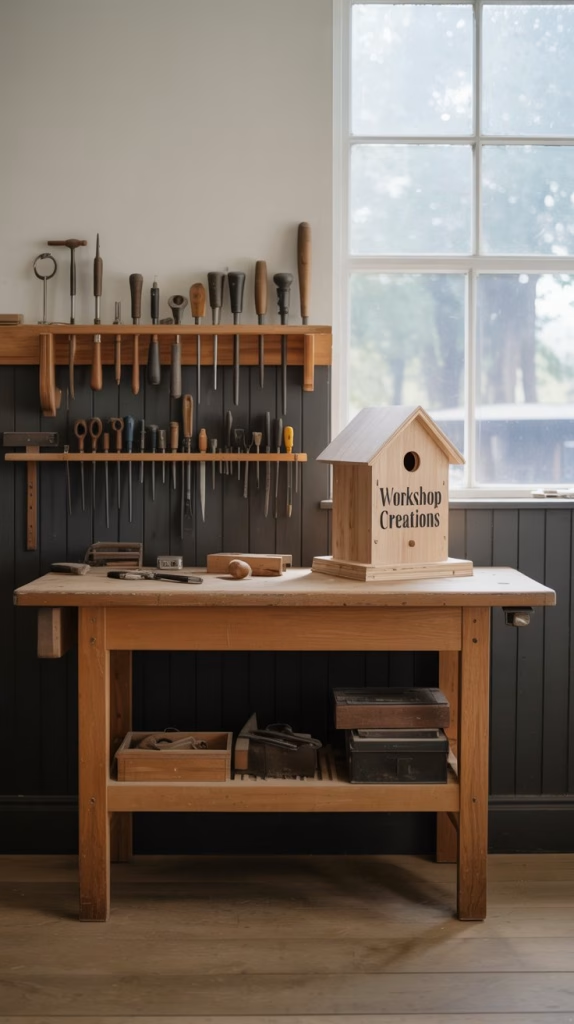
A two-tone paint scheme with a chair rail is a great way to combine the best of both worlds. The lower half of the wall, which is most likely to get scuffed, dirty, and marked, can be painted a darker, more durable color like charcoal, a deep green, or a dark blue. This hides the wear and tear and makes the space feel more grounded. The upper half of the wall can be painted a lighter, more reflective color like white, light gray, or pale yellow.
This visual division not only looks great but is also highly practical. The darker color on the bottom protects the walls from damage, while the lighter color on top helps to reflect light and keep the room feeling open and airy. You can also use the two-tone scheme to organize your tools and materials. For example, you could hang your tools on the darker bottom half, where they are easy to see, and use the lighter top half for shelves or display areas.
9. Black and White: The High-Contrast, High-Impact Look
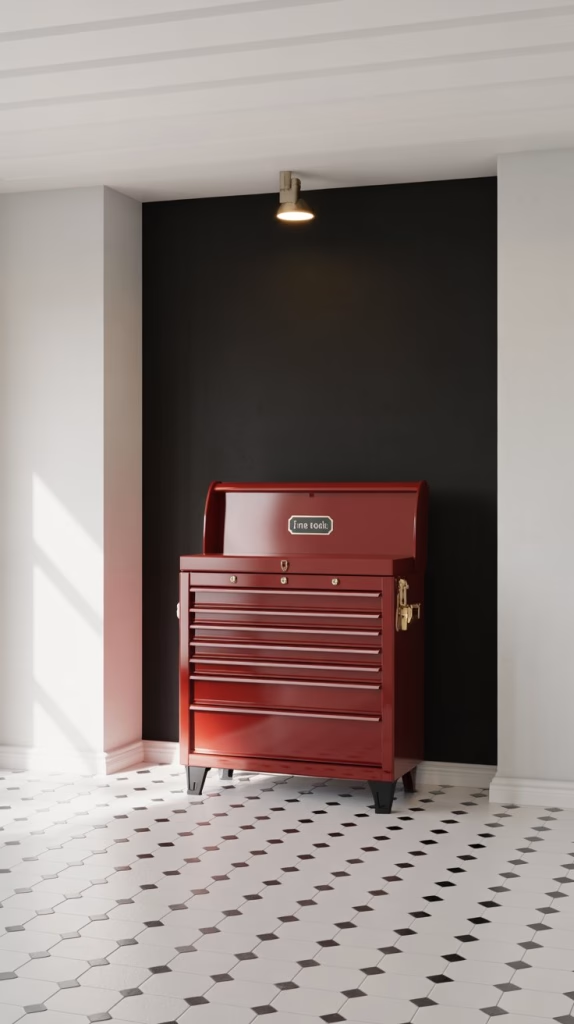
The black and white color scheme is a classic for a reason. It is bold, timeless, and creates a sense of high-impact professionalism. In a wood shop, this combination can be used to great effect. White walls will maximize light, while a black accent wall can serve as a dramatic backdrop for displaying your favorite tools or a particularly beautiful project.
This high-contrast look is also very practical. The black areas are excellent for hiding scuffs and marks, while the white areas keep the space feeling open and bright. You can also incorporate black and white into your organization system, using black bins for one type of material and white for another. This scheme can make your shop feel incredibly clean and modern, almost like a gallery space for your craft. It’s a sophisticated choice for a woodworker who takes their work seriously and wants their space to reflect that.
10. Warm Terracotta or Burnt Orange: The Earthen and Warm Space
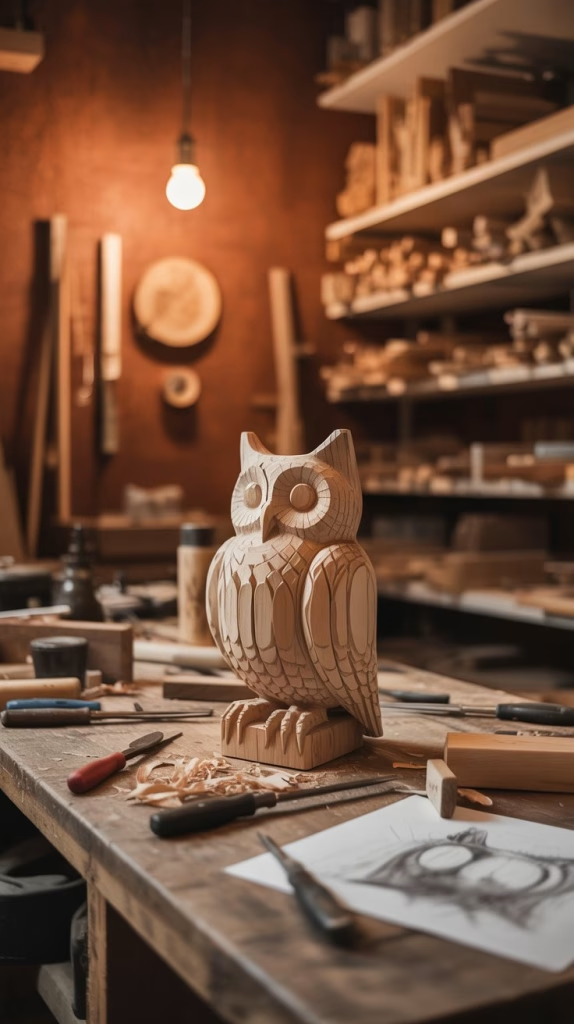
For a warm and earthy feel, consider a rich terracotta or burnt orange. This color palette is a fantastic choice for a woodworker who loves the natural feel of their materials. Terracotta is a grounded, earthy color that can make a garage feel less like a cold, utilitarian space and more like a warm, inviting studio. It pairs beautifully with the natural tones of wood, making your projects feel right at home. This color is also known to evoke feelings of comfort and stability.
The warmth of terracotta can create a cozy and intimate atmosphere, which can be great for focusing on detailed work. It can make a large, open garage feel more contained and manageable. While it is a darker color, it is not as light-absorbing as black or dark gray, so it still allows for a good amount of light reflection. When paired with the right lighting, a terracotta-painted wood shop can feel incredibly welcoming and inspiring. It’s a unique and thoughtful choice that shows a deep appreciation for natural materials and craftsmanship.

